Discovering the Best Places to Eat in Hanoi: The Ultimate Foodie Guide
Discovering the best places to eat in Hanoi becomes an unforgettable adventure for any food lover exploring Vietnam’s ancient capital. This ultimate foodie guide takes you through a city where centuries-old temples stand beside French colonial architecture, and where the cuisine tells the story of Vietnam’s complex history in every fragrant bowl and sizzling street-side platter. The ancient capital doesn’t just offer meals—it provides edible history lessons, cultural immersions, and sensory experiences that linger long after you’ve returned home.
The distinctive character of Hanoian cuisine—subtle yet bold, refined yet accessible—emerges from the perfect harmony of five fundamental elements: the freshness of herbs, the complexity of fish sauce, the brightness of lime, the heat of chilli, and the sweetness of sugar. These elements dance together in dishes that have been perfected over generations, creating a culinary landscape unlike any other in Southeast Asia.
Whether you’re perched on a tiny plastic stool along a bustling alleyway or seated in a colonial-era dining room, this guide to the best places to eat in Hanoi will take you beyond the ordinary tourist experience and into the heart of what makes this city one of the top culinary destinations in all of Vietnam.
Why Hanoi’s Food Scene is Unmissable
Hanoi’s food story began over a thousand years ago when the city was established as the capital of the Đại Việt empire. The Red River Delta provided fertile ground for rice cultivation and freshwater fish, establishing the foundation of the region’s cuisine.
The Chinese occupation (111 BCE–938 CE) introduced stir-frying techniques and the use of chopsticks, while the French colonial period (1883–1954) contributed baguettes, beef-based soups, and coffee culture—elements that Hanoians ingeniously adapted and transformed into distinctly Vietnamese creations like bánh mì and phở.
Following the American War, periods of rationing and scarcity led to creative solutions that emphasized making the most of every ingredient—a philosophy that persists in the resourcefulness of Hanoian cooking today, where nothing goes to waste and every part of an animal or plant finds its purpose.
What Makes Hanoi’s Best Places to Eat Unique
Hanoi’s cuisine stands apart from central and southern Vietnamese cooking in several key ways:
- Subtlety over intensity: Northern dishes tend to be less sweet and less spicy than their Southern counterparts
- Seasonal awareness: The distinct four seasons of the north influence what’s eaten when
- Chinese influence: Proximity to China brings techniques like stir-frying and a preference for fresh noodles
- Conservative traditions: Recipes in Hanoi tend to adhere more strictly to traditional preparations
Understanding these regional distinctions helps us appreciate why a bowl of phở in Hanoi tastes profoundly different from one in Ho Chi Minh City—and why both are authentic expressions of Vietnamese culinary art.
Best Places to Eat in Hanoi: Street Food Sanctuaries
Phở: The Soul of Hanoi in a Bowl
Pronunciation: fuh (with a rising tone)
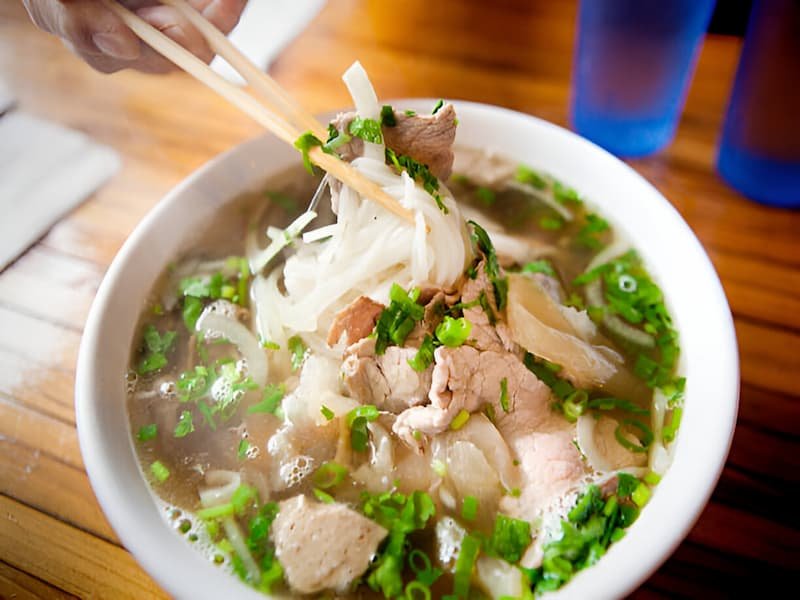
While tourists flock to famous establishments, discerning locals queue each morning at Phở Thìn Lò Đúc (13 Lò Đúc), where, since 1979, the distinctive technique of stir-frying beef with garlic before adding it to the broth creates a unique caramelized flavour impossible to find elsewhere.
“The secret is in our broth—it simmers for at least 12 hours with beef bones, charred ginger, and star anise. But it’s the quick stir-fry of the beef that gives our phở its soul.” — Nguyen Van Thin, third-generation owner
When to go: 5:30 am-9:30 am, when the broth is freshest.
What to order: Phở tái nạm (rare and well-done beef phở, 60,000 VND).
Pro tip: Ask for extra quẩy (fried dough sticks) to dip in your broth. Find more affordable culinary delights in our comprehensive Best Budget Eats in Hanoi: A Food Lover’s Guide.
Bún Chả: Obama’s Favorite Among Hanoi’s Best Eateries
Pronunciation: boon cha (with a falling tone on “cha”)

Beyond the famous Bún Chả Hương Liên (24 Lê Văn Hưu)—where Anthony Bourdain and Barack Obama shared a meal in 2016—locals prefer the smoky perfection at Bún Chả Đắc Kim (1 Hàng Mành).
What makes their bún chả exceptional is the traditional charcoal grilling method and the family’s secret fish sauce recipe, passed down four generations and balanced with precisely calibrated amounts of lime juice, sugar, chilli, and garlic.
When to go: 11 am-2 pm, following the local lunch rhythm
What to order: Standard bún chả set (65,000 VND) with optional nem cua bể (crab spring rolls, 25,000 VND)
Pro tip: Add a few spoonfuls of the garlic and chilli from the table condiments to customize your dipping sauce
Bánh Cuốn: The Morning Ritual at Hanoi’s Best Breakfast Spots
Pronunciation: baan kwon (with rising tones)
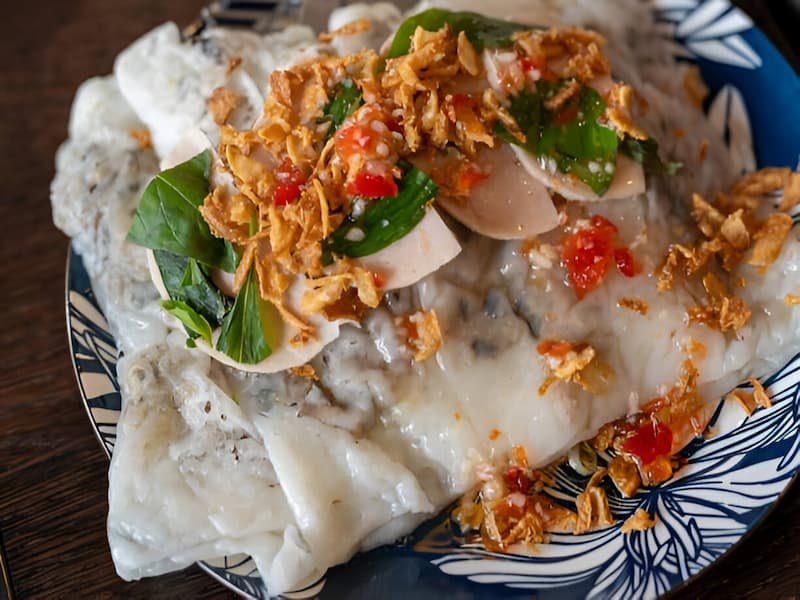
These delicately steamed rice rolls are filled with seasoned ground pork and wood ear mushrooms, then topped with crispy fried shallots and fresh herbs. At Bánh Cuốn Bà Hoành (66 Tô Hiến Thành), the family has been making them the same way for over 50 years.
What distinguishes exceptional bánh cuốn is the paper-thin translucency of the rice sheets—so thin you can read a newspaper through them—and the lightness of the filling, which should be seasoned with white pepper rather than black.
When to go: 7 am-10 am, when the batter is freshly made
What to order: Bánh cuốn thịt (with pork filling, 40,000 VND)
Pro tip: Watch the artful process of making the rice sheets on the cloth-covered steamer
Hidden Gems: Best Places to Eat in Hanoi’s Alleyways
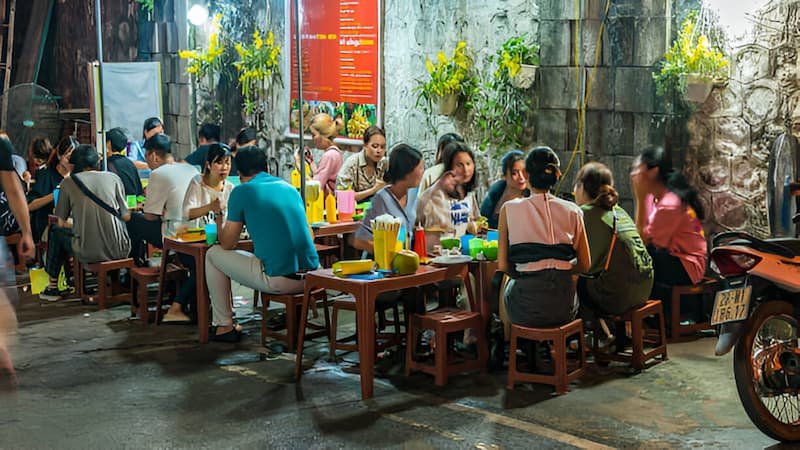
Some of Hanoi’s most extraordinary culinary experiences aren’t found on main streets but tucked away in the city’s labyrinthine network of alleyways (ngõ).
Bún Cá Sâm Cây Si: A Local Favorite
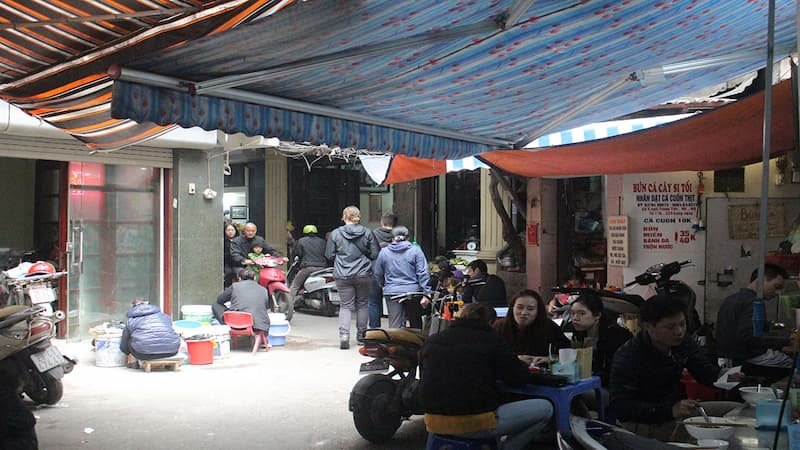
Location: Ngõ 5 Huyền Trân Công Chúa (look for the fish symbol painted on a yellow wall)
Specialty: Bún cá (fish noodle soup, 70,000 VND)
What makes this tiny family-run operation special is its use of freshwater fish from the Red River Delta, fried until crispy and then simmered in a turmeric-infused broth with dill and tomato. The family has refused numerous offers to expand or relocate, insisting that the spirit of the dish is tied to this specific location.
Bột Chiên Hàng Gai: Worth the Search
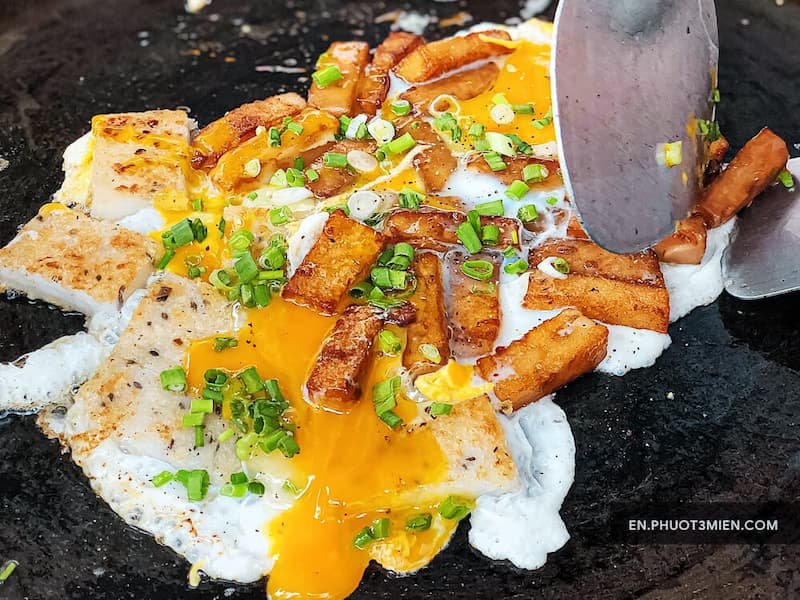
Location: End of Ngõ Huyện, behind St. Joseph’s Cathedral
Specialty: Bột chiên (fried rice flour cakes with egg, 45,000 VND)
A Chinese-influenced dish rarely found in tourist guides, these crispy rice flour cakes are fried with egg and served with a tangy papaya salad and sweetened soy sauce. The elderly couple who run this stand have been using the same cast iron pan for over 30 years, contributing to the distinctive flavour.
Discover more secret culinary treasures in our guide to Hidden Food Gems and Must Try Dishes in Hanoi.
Seasonal Specialties: When to Find the Best Food in Hanoi
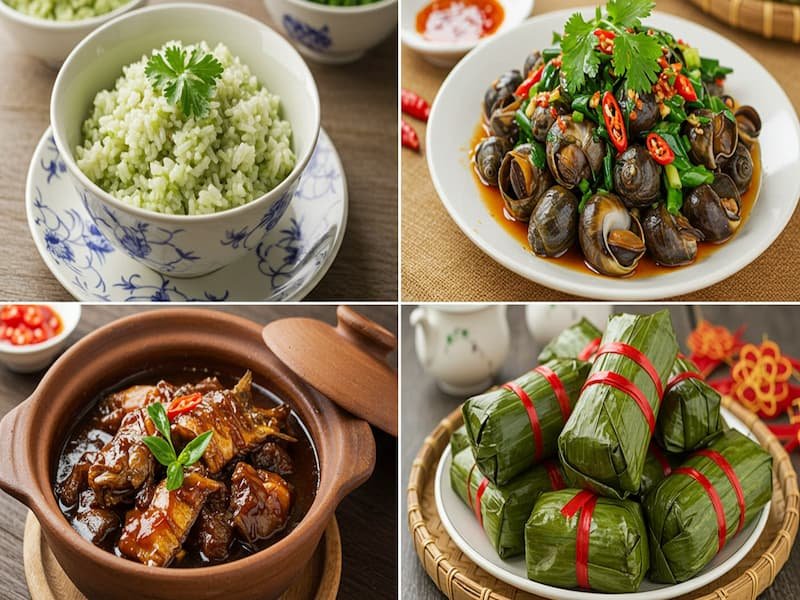
Hanoi’s cuisine follows the rhythm of its four distinct seasons, with dishes appearing and disappearing throughout the year:
Spring (February-April): Best Places to Eat Spring Specialties in Hanoi
- Cốm: Young green rice pounded into delicate flakes
- Best at: Cốm Vòng (Vòng Village, 20km west of Hanoi centre)
- Rau Bò Khai: Wild mountain vegetables with a slightly bitter taste
- Best at: Quán Ăn Ngon (18 Phan Bội Châu)
Summer (May-August): Cooling Dishes at Hanoi’s Best Eateries
- Ốc: Freshwater snails in lemongrass broth
- Best at: Ốc Thảo (85 Sư Vạn Hạnh)
- Chè Hoa Cau: Palm flower sweet soup, served cold
- Best at: Chè Bốn Mùa (4 Hàng Đường)
Autumn (September-November): Hanoi’s Best Fall Delicacies
- Cá Kho Tộ: Caramelized fish in a clay pot
- Best at: Quán Bún Chả Hương Liên (24 Lê Văn Hưu)
- Bánh Trôi Tàu: Glutinous rice balls in ginger syrup
- Best at: Bánh Trôi Tàu Bà Thảo (30 Hàng Giấy)
Winter (December-January): Warming Comfort Food in Hanoi
- Lẩu Riêu Cua Bắp Bò: Crab and beef hot pot
- Best at: Quán Lẩu Cua Đồng (12 Thợ Nhuộm)
- Bánh Chưng: Sticky rice cakes with pork and mung bean
- Best at: Bánh Chưng Bà Thảo (12 Hàng Than)
Beyond Phở: The Best Noodle Soups of Hanoi
While phở receives international acclaim, Hanoi boasts a diverse array of lesser-known noodle soups that locals treasure:
Bún Riêu: A Local Favorite Among Hanoi’s Best Soups
Pronunciation: boon r-yeh-oo

A tomato-based soup featuring a unique crab paste, tofu, and round rice noodles. The best version can be found at Bún Riêu Cua Hàng Bạc (11 Hàng Bạc), where the broth achieves the perfect balance between sourness from tomatoes, sweetness from paddy crabs, and umami from fermented shrimp paste.
Bún Thang: The Most Sophisticated Soup in Hanoi
Pronunciation: boon tahng
A sophisticated noodle soup containing up to 20 ingredients arranged in precise layers: shredded chicken, thin egg crepes, Vietnamese ham (giò), mushrooms, and herbs. Bún Thang Bà Đức (48 Cầu Gỗ) prepares this labour-intensive dish the traditional way, including the hard-to-find essence of cà cuống (giant water bug) that adds an apple-like aroma.
While these noodle soups are local favourites, they’re just the beginning of Hanoi’s lesser-known specialities. Discover more in our guide to Hidden Food Gems and Must Try Dishes in Hanoi.
Colonial Influences: French-Vietnamese Fusion at Hanoi’s Best Restaurants
The French colonial period left an indelible mark on Hanoi’s cuisine, creating hybrid dishes that blend European and Vietnamese sensibilities:
Chả Cá Lã Vọng: Hanoi’s Most Famous Dish
Pronunciation: cha ka la vong
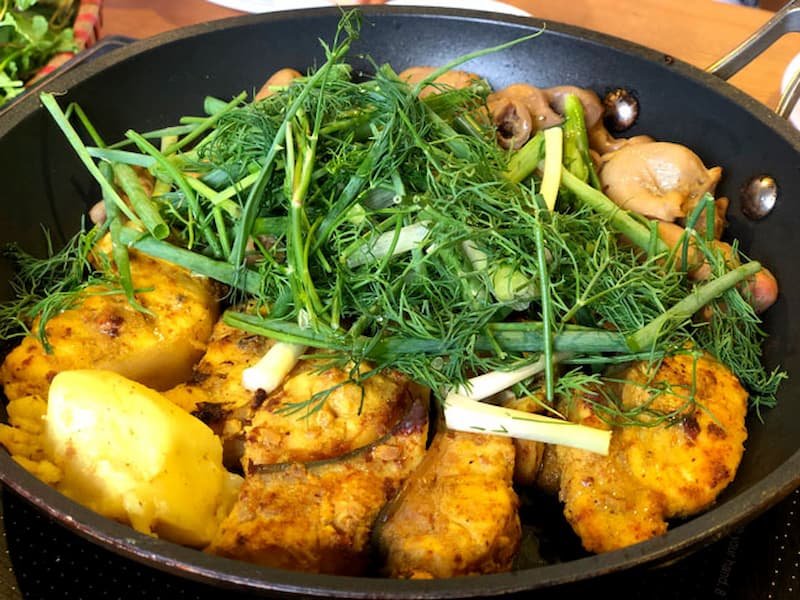
At the 150-year-old Chả Cá Lã Vọng (14 Chả Cá Street), thin slices of turmeric-marinated fish are grilled tableside with dill and green onions, then served with rice noodles, peanuts, and shrimp sauce. The restaurant is so famous that the street was renamed after the dish.
What to order: Set menu for two (about 350,000 VND)
Pro tip: The theatrical table-side preparation is part of the experience—come with a camera ready
Bánh Mì: The Best Vietnamese Sandwich in Hanoi
While many associate bánh mì with southern Vietnam, Hanoi offers distinctive varieties that highlight the bread itself with overabundant fillings. At Bánh Mì Phố Cổ (38 Đinh Liệt), the focus is on the perfect baguette—crusty outside, airy inside—with minimal but high-quality fillings, particularly their house-made chicken liver pâté infused with five-spice.
What to order: Bánh mì pâté chả (pâté and Vietnamese ham, 25,000 VND)
When to go: 3 pm-5 pm, when the bread is freshest from the afternoon baking.
For a complete exploration of the Old Quarter’s best bánh mì options, check out our Best Bánh Mì in Hanoi’s Old Quarter: A Foodies Guide.
Hanoi’s Best Coffee Houses: Beyond the Beans
Hanoi’s coffee culture represents one of the most successful cultural fusions from the French colonial period, which evolved into something distinctly Vietnamese:
Egg Coffee: Hanoi’s Signature Brew

Created during milk shortages in the 1940s, this Hanoi speciality features a custard-like topping of whipped egg yolks, sugar, and condensed milk. The original recipe from Café Giảng (39 Nguyễn Hữu Huân) remains a closely guarded secret, though dozens of imitators have emerged.
What to order: Cà phê trứng nóng (hot egg coffee, 35,000 VND)
Pro tip: Stir the egg cream into the coffee completely before drinking
Coconut Coffee: A Modern Classic at Hanoi’s Best Cafés
A more recent innovation, this drink blends Vietnamese coffee with coconut cream, creating a beverage somewhere between coffee and dessert. Cộng Cà Phê (54 Hàng Điếu) serves as the definitive version in a space decorated with Vietnamese propaganda art and vintage items.
What to order: Cà phê cốt dừa đá (iced coconut coffee, 45,000 VND)
Pro tip: Their coconut coffee smoothie variant is even more indulgent
Modern Hanoi: Best Contemporary Vietnamese Restaurants
While traditional fare defines Hanoi’s culinary identity, a new generation of chefs is reimagining Vietnamese cuisine through contemporary techniques and presentations:
Ănăn Saigon: Traditional Flavors, Modern Techniques
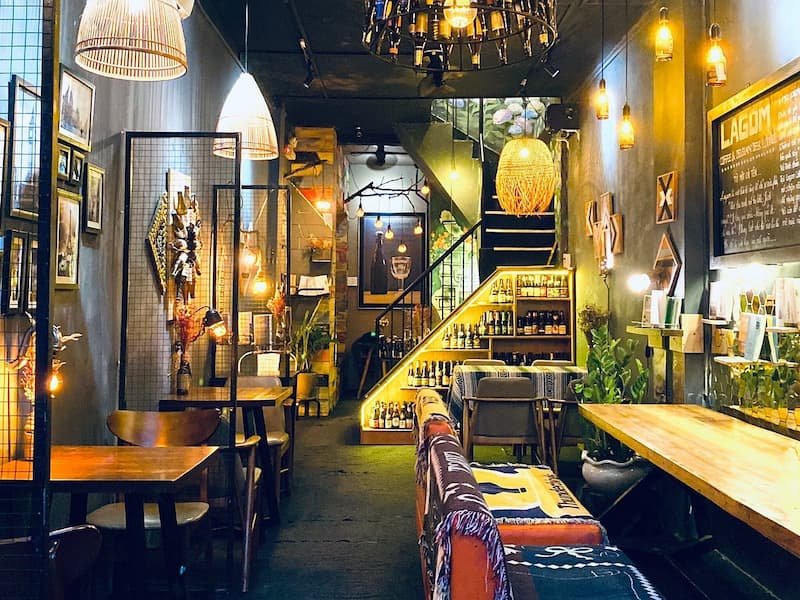
Location: 24 Tông Đản Street, 2nd Floor
Price range: 300,000-500,000 VND per person
Chef Peter Cuong Franklin combines his Vietnamese heritage with training at culinary institutions like the French Culinary Institute. His “New Vietnamese” cuisine respects traditional flavours while introducing modern techniques, as in his 24-hour sous-vide then flash-fried pork belly with caramel fish sauce.
T.U.N.G Dining: Hanoi’s Best Fine Dining Experience
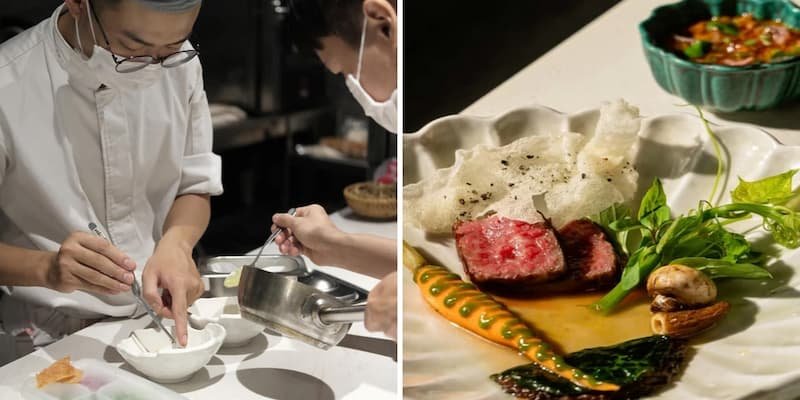
Location: 2nd Floor, 2 Quán Sứ
Price range: 1,200,000-1,800,000 VND for tasting menu
Chef Hoang Tung’s innovative tasting menu showcases purely Vietnamese ingredients through the lens of modern gastronomy. His signature “Red River” dish presents local ducks with fermented red rice, rice paper crisps, and herbs from Vietnam’s northern mountains in a visual representation of the country’s geography.
Explore more high-end culinary experiences in our Luxury Dining in Hanoi: A Foodie’s Guide.
Best Places to Eat in Hanoi by Neighborhood
While the Old Quarter receives the most tourist attention, other neighbourhoods offer distinctive culinary experiences:
The Old Quarter: Classic Hanoi Dining
The maze-like streets of Hanoi’s Old Quarter are home to some of the city’s most beloved eateries:
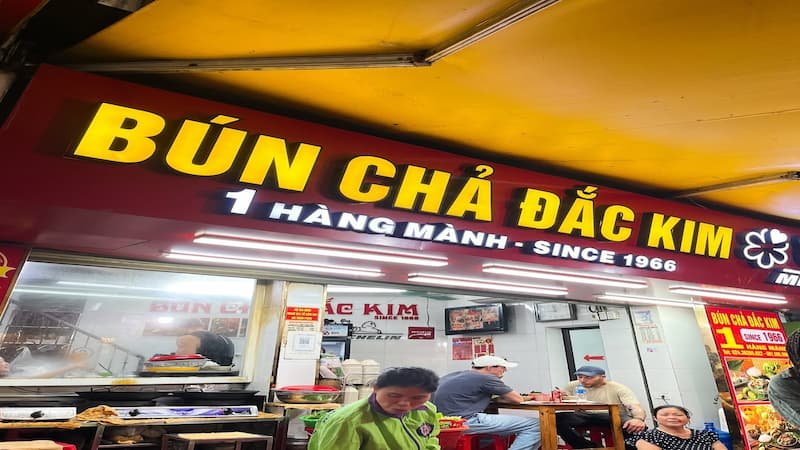
- Bún Chả Đắc Kim (1 Hàng Mành): Charcoal-grilled pork and rice noodles
- Bánh Mì 25 (25 Hàng Ca): Crispy baguettes with housemade pâté
- Chả Cá Thăng Long (19-21-31 Đường Thành): Turmeric fish with dill
Trúc Bạch: Lakeside Specialties
This lakeside area just west of the Old Quarter specializes in:
- Phở Cuốn Hương Mai (25 Ngũ Xã): Uncut sheets of fresh rice noodles wrapped around stir-fried beef and herbs
- Quán Ốc Cô Bé (1 Trúc Bạch): Boiled snails with lemongrass, served with ginger-lime dipping sauce
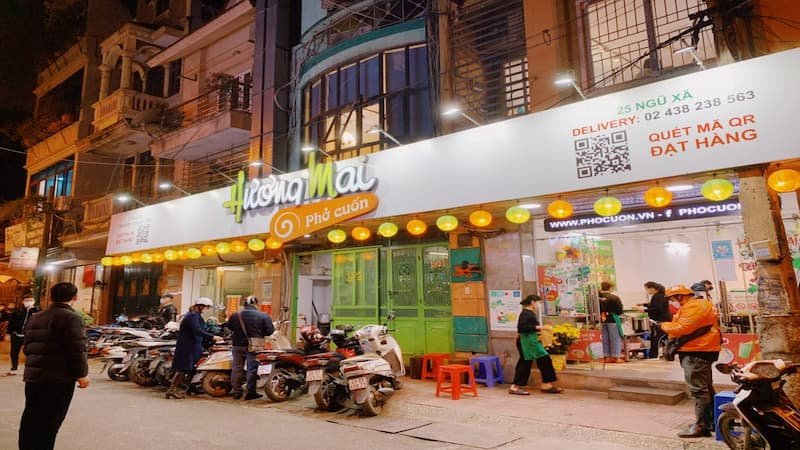
Tây Hồ (West Lake): Hanoi’s Best Upscale Dining
This upscale residential district offers refined versions of street classics and houses some of Hanoi’s finest dining establishments. For more premium options, see our Luxury Dining in Hanoi: A Foodie’s Guide.
- Bánh Tôm Hồ Tây (1 Thanh Niên Road): West Lake shrimp cakes made with freshwater shrimp and sweet potato
- Bún Ốc Bà Được (43 Cầu Giấy): Snail noodle soup with a tomato-based broth
Cultural Dining Etiquette: Eat Like a Local at Hanoi’s Best Restaurants
Navigating Hanoi’s dining scene goes beyond simply savoring the flavors—it’s about embracing the cultural rituals that define Vietnamese hospitality. In Hanoi’s best restaurants, meals unfold as communal experiences where dishes are shared family-style, with diners using chopsticks to take small portions from central platters. Locals demonstrate respect by serving elders first and keeping chopsticks positioned neatly rather than sticking upright in rice, a taboo associated with funeral offerings. The gentle art of pouring tea for companions, tapping fingers to express thanks when glasses are refilled, and the unhurried pace of multi-course meals all reflect Hanoi’s relationship with food as a social connection. Understanding these subtle cultural cues transforms visitors from mere tourists to honored guests, creating authentic dining experiences that reveal the heart of Vietnamese culinary tradition.
Chopstick Etiquette at Hanoi’s Best Eateries
- Never stick chopsticks upright in rice (it resembles funeral incense)
- Use the large spoon provided with noodle soups to sample the broth
- When sharing dishes, use the opposite end of the chopsticks to take food from communal plates
Timing Matters: When to Visit the Best Places to Eat in Hanoi
- 5:30 am-9:00 am: Traditional breakfast (phở, xôi, bánh cuốn)
- 11:30 am-1:30 pm: Lunch hour (bún chả, cơm văn phòng)
- 2:00 pm-4:00 pm: Café culture thrives
- 6:00 pm-8:30 pm: Dinner (lẩu, nem cua bể, hot pot)
- 9:00 pm onwards: Late-night eating (cháo, phở again)
Food Tours and Cooking Classes: Guided Experiences of Hanoi’s Best Food
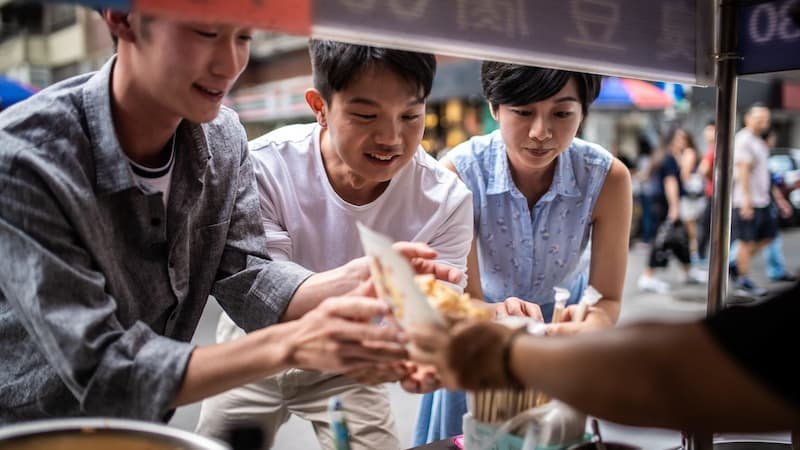
Hanoi, Vietnam’s capital city, offers visitors an unparalleled culinary journey through its vibrant street food scene and traditional cooking techniques. Food tours and cooking classes have become essential experiences for travelers seeking to understand Vietnamese culture through its diverse flavors. Led by knowledgeable local guides, these immersive adventures take participants through bustling markets, hidden street food alleys, and family kitchens where centuries-old recipes are shared. From slurping bowls of aromatic phở to learning the delicate art of wrapping bánh cuốn, these guided experiences provide both the stories behind Hanoi’s iconic dishes and the hands-on skills to recreate them, offering a deeper connection to the city’s rich culinary heritage.
Best Food Tours in Hanoi
Hanoi Street Food Walking Tour

- Duration: 3 hours
- Price: $45-$48 USD per person
- Highlights: Hidden Old Quarter stalls, explanation of ingredients, cultural context
- Booking: Through Tripadvisor.com
Vintage Vespa Street Food Adventure
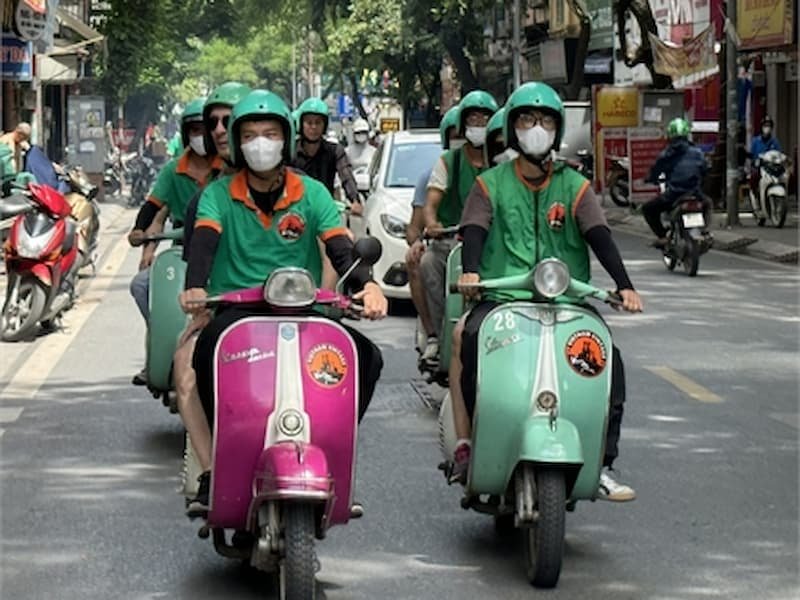
- Duration: 4.5 hours
- Price: $59 – $119 USD per person
- Highlights: Evening tour on vintage Vespas, includes both street food and sit-down restaurants
- Booking: Vietnam Vintage Vespa Tours
Best Cooking Classes in Hanoi
The Hanoi Cooking Centre
- Duration: 4-5 hours (includes market tour)
- Price: $65 USD per person
- Dishes taught: Phở, nem rán, bún chả
- Includes: Recipe book, market tour, and all ingredients
- Booking: Through Viator
Hidden Hanoi
- Duration: 3 hours
- Price: $55 USD per person
- Dishes taught: Focuses on northern Vietnamese specialities
- Includes: Cultural explanations, printed recipes
- Booking: Hidden Hanoi
Dietary Restrictions: Finding the Best Places to Eat in Hanoi for All Diets
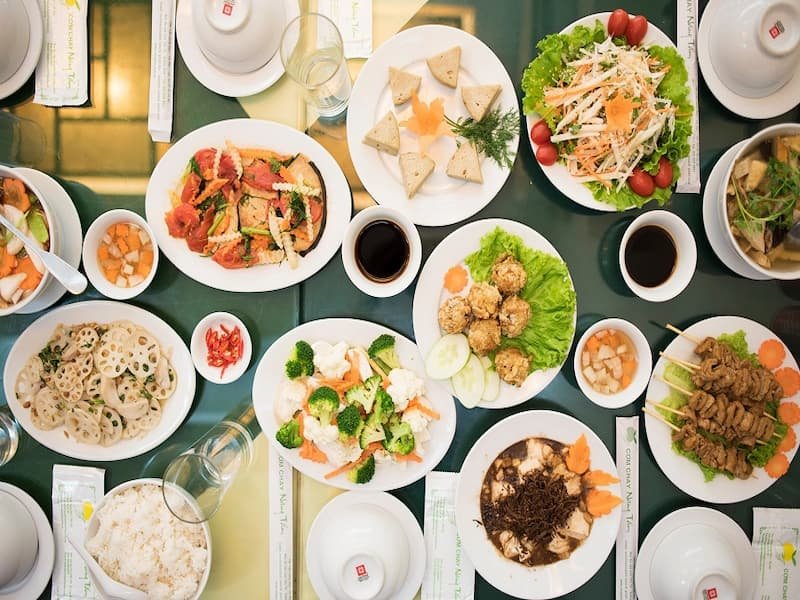
Vegetarian and Vegan Options in Hanoi
Hanoi’s culinary landscape, while traditionally meat-centric, offers a surprising wealth of vegetarian and vegan delights for plant-based travelers. The city’s Buddhist influence has fostered a rich tradition of meat-free cooking, with dedicated vegetarian restaurants (quán chay) serving creative plant-based versions of Vietnamese classics. From fragrant mushroom phở to crispy tofu bánh mì, these establishments transform familiar favorites using locally-sourced produce and centuries-old techniques. Street food vendors increasingly accommodate plant-based diets, while modern cafés blend traditional flavors with contemporary vegan approaches. Visitors need only learn the phrase “tôi ăn chay” (I eat vegetarian) to unlock a world of flavorful options that showcase the versatility and depth of Hanoi’s plant-based cuisine.
Cơm Chay Nàng Tâm
- Location: 79A Trần Hưng Đạo
- Specialities: Bún chả made with mushrooms instead of pork, vegetarian phở
- Price range: 30,000-60,000 VND per dish
Tips for Ordering Vegetarian Food:
- “Tôi ăn chay” = “I eat vegetarian food”
- “Không thịt” = “No meat”
- Be specific about fish sauce (“không nước mắm”)
Common Allergens in Hanoi’s Best Restaurants
For those with allergies, be aware of these common ingredients:
- Peanuts (frequently used as a garnish)
- Fish sauce (in virtually everything)
- MSG (common flavour enhancer)
- Wheat (in bánh mì and certain noodles)
Useful phrase: “Tôi bị dị ứng với…” = “I am allergic to…”
Practical Information for Finding the Best Places to Eat in Hanoi
Essential Vietnamese Food Phrases
- “Xin chào” = Hello
- “Cảm ơn” = Thank you
- “Tính tiền” = Bill, please
- “Ngon quá” = Very delicious
- “Không cay” = Not spicy
- “Ít đường” = Less sugar
Payment and Tipping at Hanoi’s Best Restaurants
- Most street stalls and local restaurants accept cash only
- Upscale establishments accept credit cards
- Tipping is not traditionally expected, but is appreciated (10% is generous)
Food Safety Tips for Eating in Hanoi
- Look for busy stalls with high turnover
- Bottled water is recommended
- Hot, freshly cooked food is the safest
- Morning is often best for the freshest ingredients
For travellers on a budget, you can still experience excellent Hanoi cuisine. See our Best Budget Eats in Hanoi: A Food Lover’s Guide for money-saving tips.
Seasonal Food Festivals: When to Visit Hanoi for the Best Food Experiences
Tết (Lunar New Year, January/February)
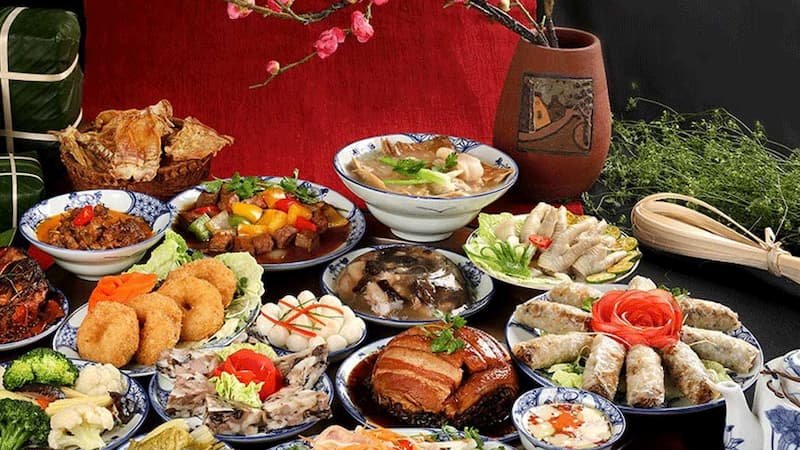
Special foods include:
- Bánh chưng: Sticky rice cakes with pork and mung bean
- Giò lụa: Vietnamese pork sausage
- Xôi gấc: Red sticky rice colored with gấc fruit
Mid-Autumn Festival (September/October)
- Bánh trung thu: Mooncakes with various fillings
- Chè long nhãn hạt sen: Sweet soup with longan and lotus seeds
Photography Guide: Capturing Hanoi’s Best Food Moments
Best Spots for Food Photography in Hanoi
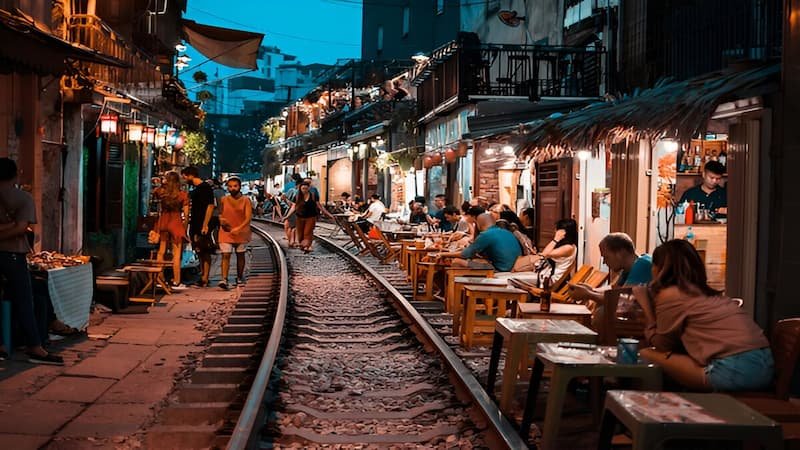
- Đồng Xuân Market (early morning for best light)
- Train Street (cafés with dramatic backdrops)
- Hàng Bè Street (fruit sellers with vibrant displays)
Photography Tips for Hanoi’s Food Scene
- Morning light (6 am-8 am) offers golden hues for street food shots
- Ask permission before photographing vendors
- Use portrait mode to capture the relationship between cooks and their craft
Why Hanoi Remains One of the Best Places to Eat in Asia
Hanoi’s food scene continues to evolve while honouring its past. From the centuries-old recipes passed through generations to innovative chefs reimagining traditional flavours, the city offers a living museum of Vietnamese culinary history alongside glimpses of its future.
The soul of Hanoi is found not just in its monuments and museums but in its simmering pots of phở, the sizzle of bún chả on charcoal grills, and the silent expertise of vendors who have spent decades perfecting a single dish.
Come with curiosity, eat with reverence, and leave with memories of flavours that will call you back to these best places to eat in Hanoi time and again.
What hidden food gems have you discovered in Hanoi? Share your finds in the comments below!
🌱 More Hanoi Foodie Adventures
Looking for more unforgettable eats in the city? Explore these reader favourites:
- 🍽️ Hidden Food Gems and Must-Try Dishes in Hanoi
- 🥖 Best Banh Mi in Hanoi’s Old Quarter: A Foodie’s Guide
- 💸 Best Budget Eats in Hanoi: A Food Lover’s Guide
- ✨ Luxury Dining in Hanoi: A Foodie’s Guide
- 🥬 Best Vegetarian Restaurants in Hanoi

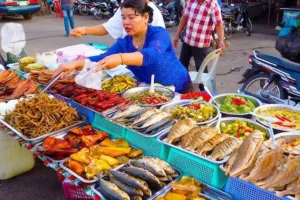
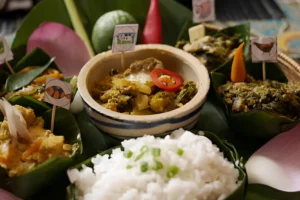
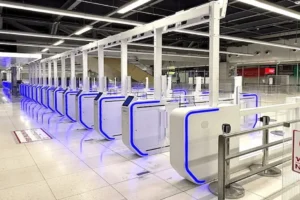




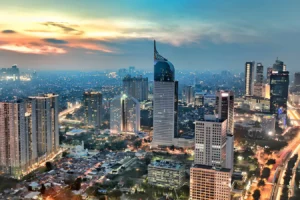











Great write-up, I¦m regular visitor of one¦s blog, maintain up the excellent operate, and It’s going to be a regular visitor for a lengthy time.